If you work with Nix, you might already have tools like nix-du and nix-tree in your toolkit. If you detect a theme with the names of both of these, you aren’t wrong: they’re Nix-specific implementations of existing Unix or Linux tools. nix-du is a reimagining of du, nix-tree of tree.
The final selection, nix-top is directly in this lineage, too. Like the venerable top—grandsire to tools like htop and btop—it provides a no-nonsense overview of Nix derivations as they’re being built on a system, giving you a way to monitor progress, resource usage, and bottlenecks.
Let’s explore how each of these tools fits into your workflow!
Getting them
Getting these packages is slightly easier with Flox than with Nix. With Nix, you’d do something like:
nix profile install --profile ~/dev/bag-o-nix nixpkgs#nix-du nixpkgs#nix-tree nixpkgs#nix-top
export PATH="$HOME/dev/bag-o-nix/bin:$PATH" # activate the nix shellAnd with Flox, you’d run:
flox init -d ./bag-o-nix # initializes the new flox env in directory `bag-o-nix`
flox install -d ./bag-o-nix nix-du nix-tree nix-top graphviz # installs dependencies in `bag-o-nix`
flox activate -d ./bag-o-nix # activatesThese are imperative installation methods. But both Nix and Flox support declarative methods, too. For example, to define these packages in a Nix dev shell, you’d create the following shell.nix:
# shell.nix example
{ pkgs ? import <nixpkgs> {} }:
pkgs.mkShell {
buildInputs = with pkgs; [
nix-du
nix-tree
nix-top
graphviz # used to generate .svg files with nix-du and nix-tree
];
}In Flox, you can do this either by directly editing manifest.toml (the Flox environment’s declarative configuration artifact) or by running flox edit, Flox’s built-in editing facility. Here’s what this looks like:
[install]
nix-du.pkg-path = "nix-du"
nix-tree.pkg-path = "nix-tree"
nix-top.pkg-path = "nix-top"
graphviz.pkg-path = “graph-viz” # used to generate .svg files with nix-du and nix-treeHowever you opt to get these packages, once you’ve got them installed, you’re ready to use ‘em.
So let’s do that.
Using them
One frequent question I hear from Flox users who aren’t Nix experts is: how do I determine how much space Flox (and, by extension, the /nix/store) are using? Thankfully there’s an app for that!
nix-du -s 1MB | dot -Tsvg > /tmp/nix-store-usage.svgThis uses nix-du to analyze the Nix store's dependency graph, filter out paths under 1MB, optimize the graph, and generates an SVG visualization of the store usage at /tmp/nix-store-usage.svg.
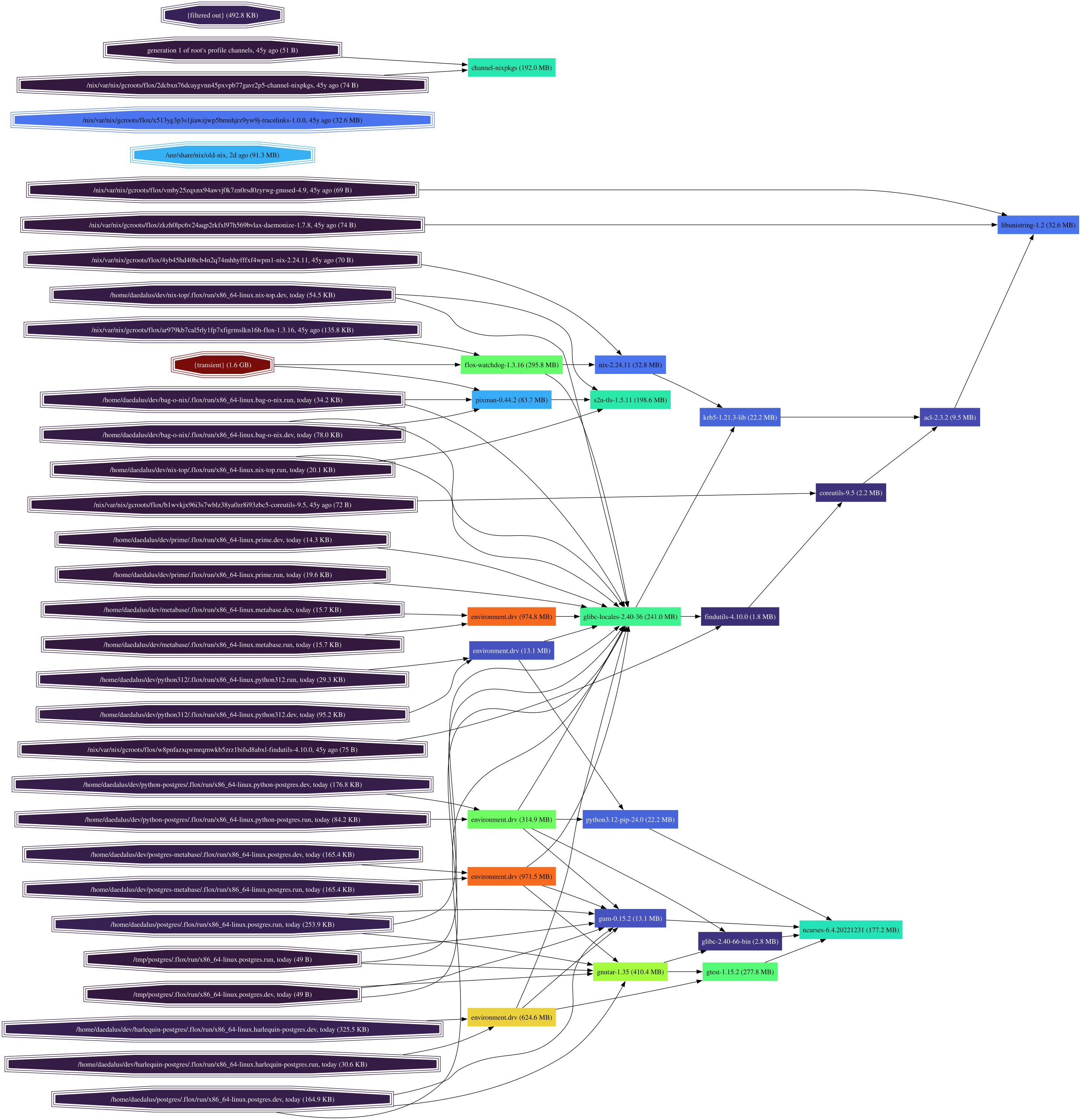
And this command shows the 20 largest nodes in /nix/store:
nix-du -n 20 | dot -Tsvg > /tmp/top20.svg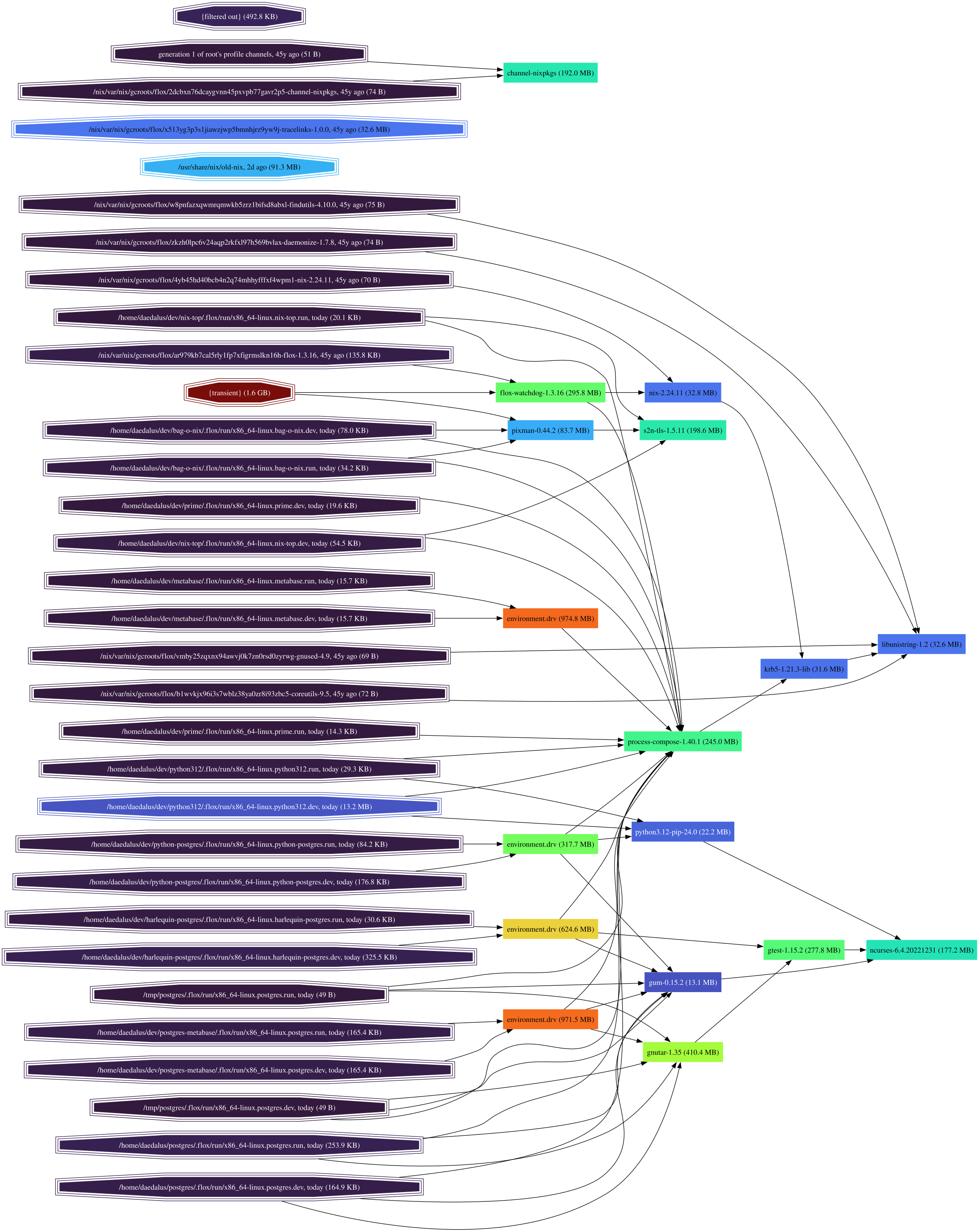
One final one: let’s visualize all of the dependencies associated with Nix’s postgresql_16 package:
nix-du -r /home/daedalus/dev/postgres-metabase/.flox/run/x86_64-linux.postgres.dev/bin/psql -s 10MB | dot -Tsvg > /tmp/postgresql-flox-deps.svg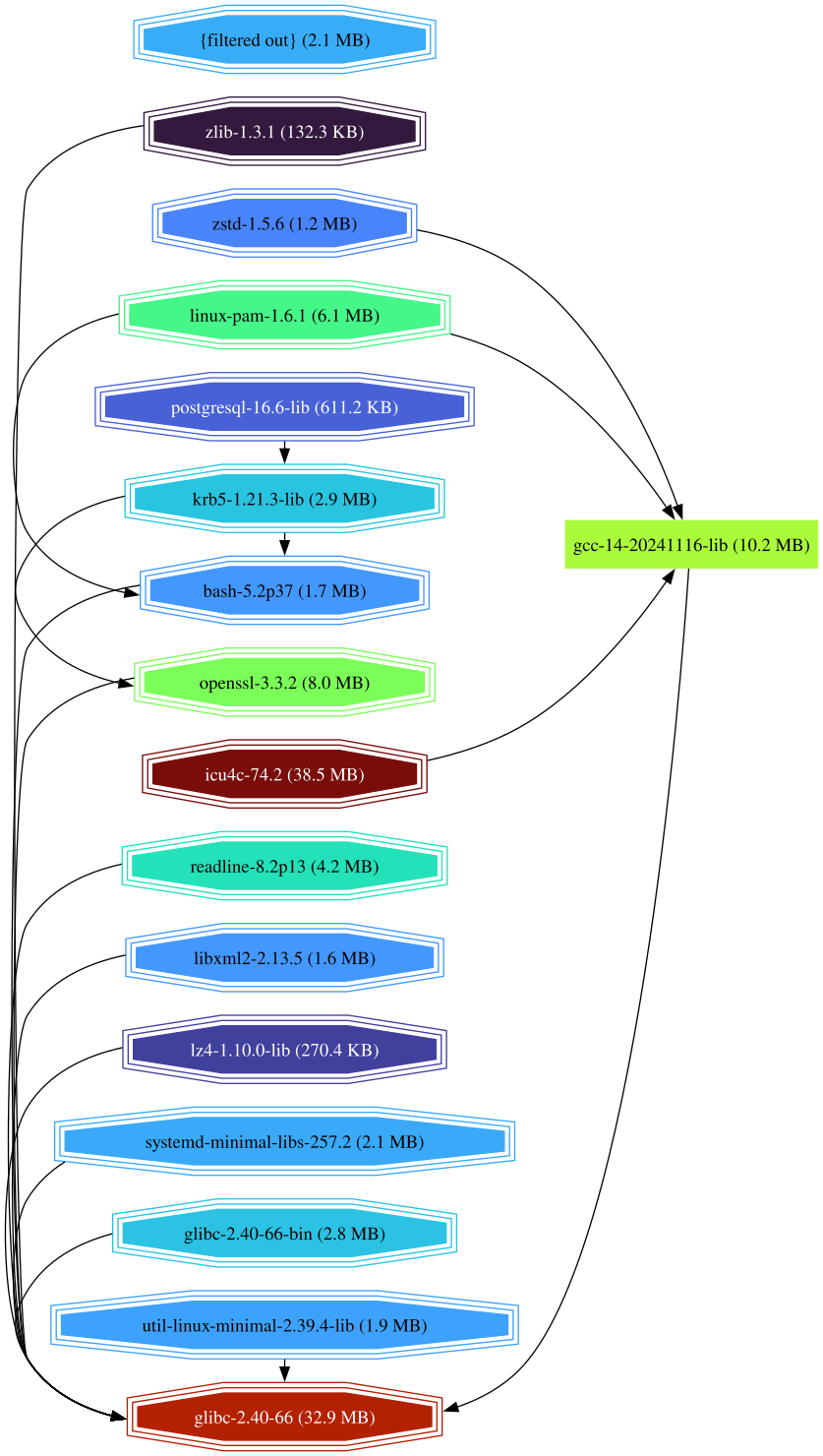
Kind of useful, no? Next, let’s check out the nix-tree package. What can one do with this?
Some truly neat things, as it turns out:
nix-tree /home/daedalus/dev/postgres-metabase/.flox/run/x86_64-linux.postgres.dev/bin/psqlThis command provides a terminal user-interface (TUI) representation of the dependency graph for postgresql_16. The screenshot below displays its output in all of its TUI-fied glory.

I love this next one! It’s another visualization of dependencies, again with the postgresql_16 packages.
nix-tree --dot /home/daedalus/dev/postgres-metabase/.flox/run/x86_64-linux.postgres.dev/bin/psql > ~/psql-deps.dot
dot -Tsvg ~/psql-deps.dot > ~/psql-deps.svg
Finally, let’s look at nix-top, which I first discovered when I was playing with my colleague Ross Turk’s flaim environment. flaim uses Nix to build PyTorch from scratch, which (if you know anything about PyTorch) is quite a time-consuming task. Flox provides feedback on the progress of this task, but nix-top gives you real-time insight to which derivations are being built.
These days, I tend to fire up nix-top whenever builds take a long time. Just out of curiosity.
In the example below, I’m using a flake.nix to build gpt4all.
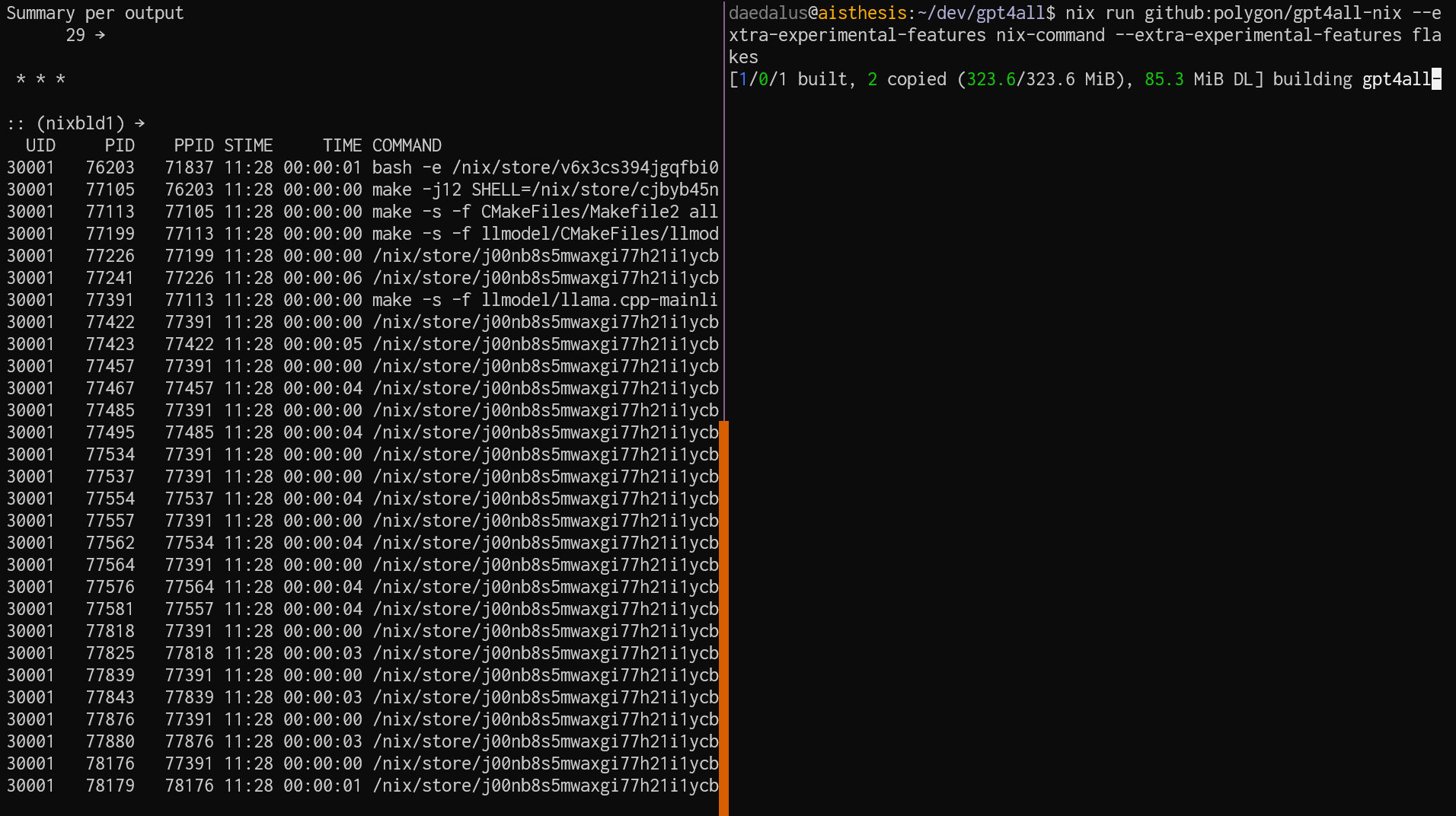
nix-top’s aesthetic is very much like that of the original top, providing a no-nonsense overview of Nix derivations as they’re being built on a system. Here’s another screenshot of gpt4all building:
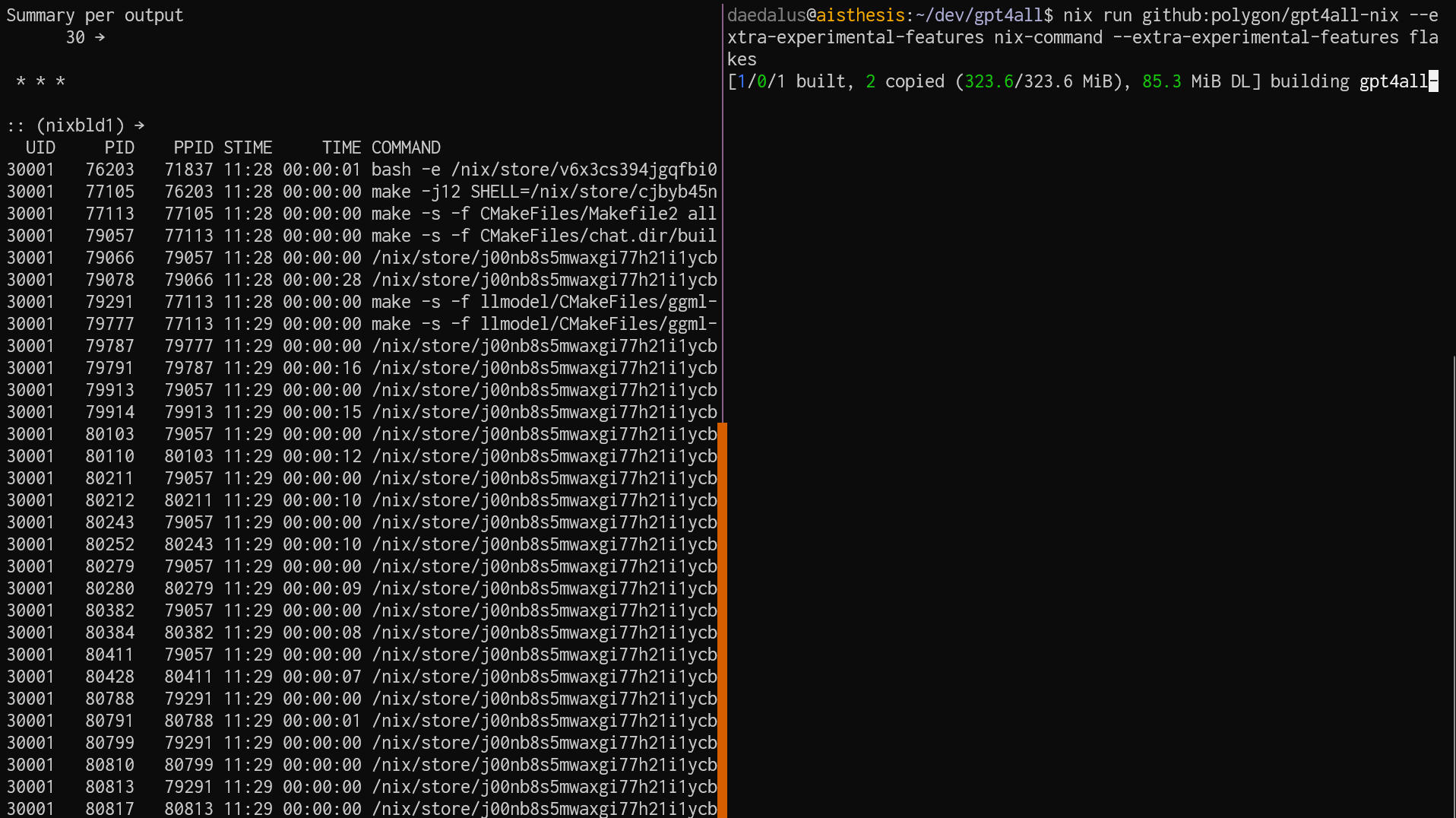
And in the screenshot below, I’m using it to monitor a long-running task started via a flake.
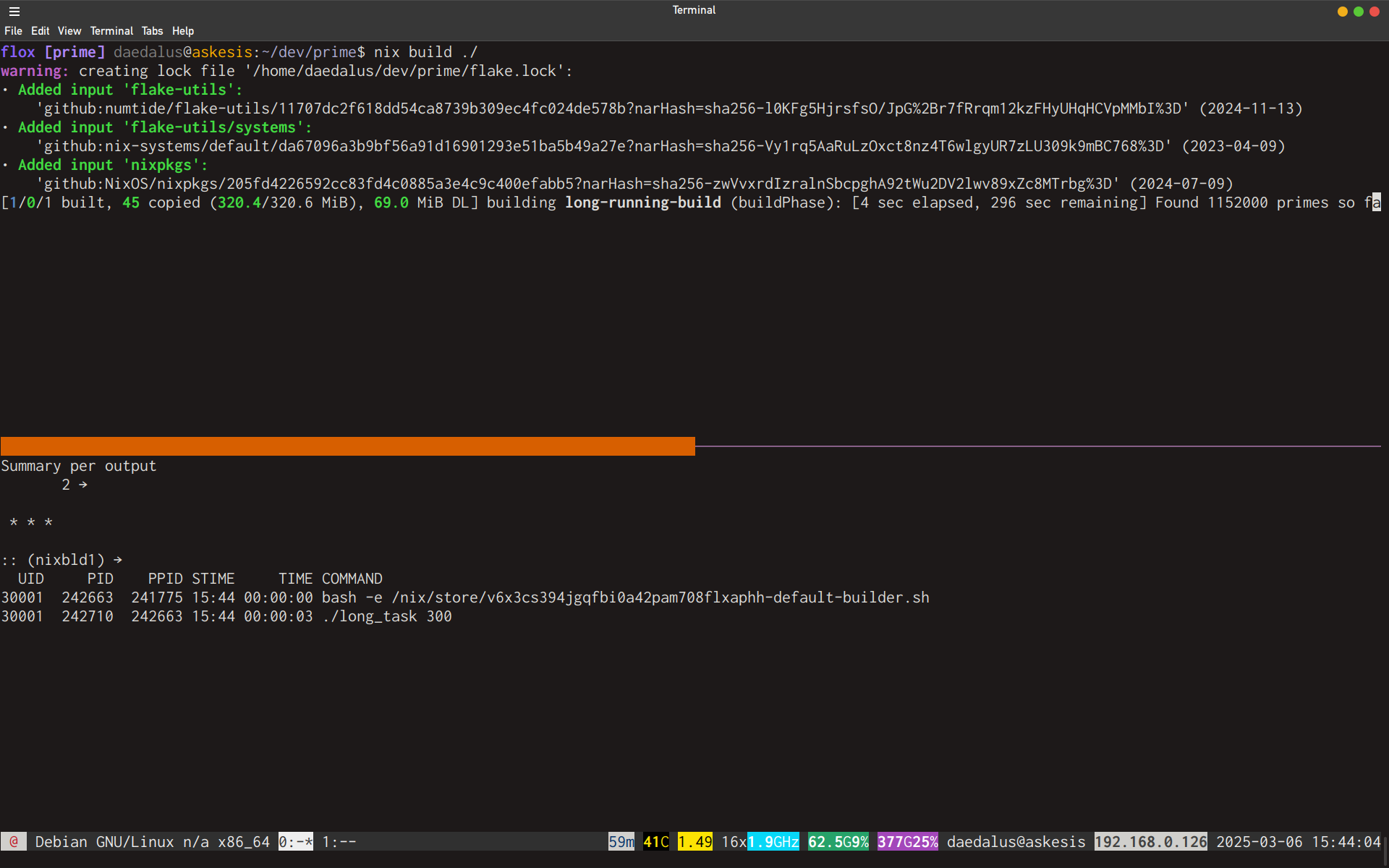
It isn’t pretty, but it’s informative. If you frequently use Nix for builds, nix-top is quite useful.
Nix Tools For All
Nix is an obscenely powerful world-builder. What else can you call software that combines
- A platform- and hardware-agnostic package manager;
- A cross-platform solution for creating portable, reproducible environments;
- A store-based isolation model for eliminating dependency conflicts;
- A cross-platform, cross-architecture build system for supporting deterministic builds;
And Flox gives you everything that Nix gives you—albeit in an easier-to-use UX, a streamlined build system, and managed private catalog services. Whether you’re using Nix or Flox, tools like nix-du, nix-tree, and nix-top are extremely useful—you’re probably going to want to have them close at hand.
No problem! You can get all three packages, along with more than 150,000 others (and literally millions of historical package-version combinations) in Nixpkgs or the Flox Catalog.
Check Nix out! Yes, it has a reputation for being intimidating, but getting started with it—e.g., installing packages, creating Nix shells, and other tasks—is pretty straightforward. (Also: LLMs are quite good at bootstrapping your Nix experience. If in the 1990s, you could learn a lot from a dummy, in the 2020s, you can learn a lot from an LLM. Some of it true!) And if you want the benefits of Nix in an easier-to-use UX, check out Flox!



